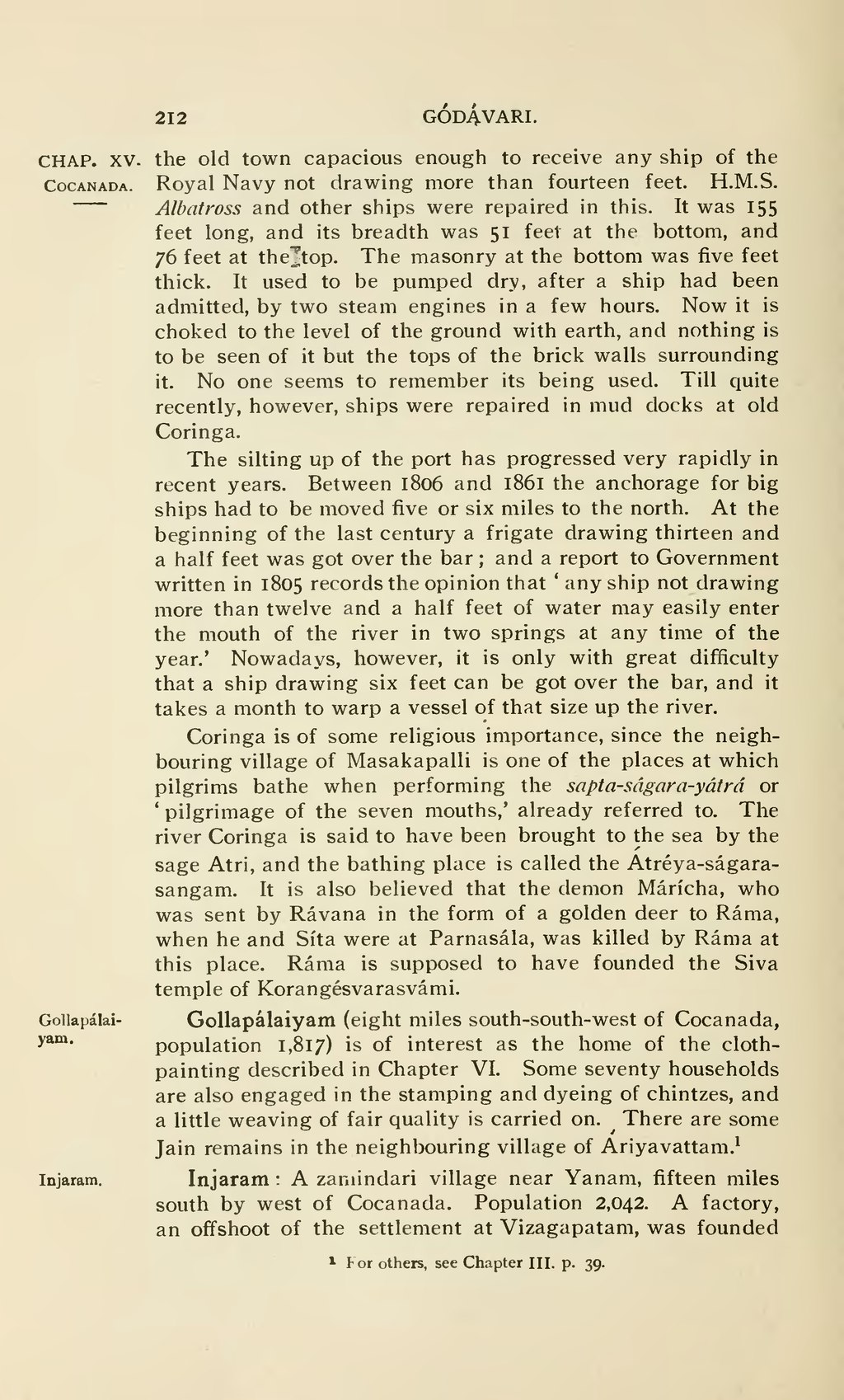the old town capacious enough to receive any ship of the Royal Navy not drawing more than fourteen feet. H.M.S. Albatross and other ships were repaired in this. It was 155 feet long, and its breadth was 51 feet at the bottom, and 76 feet at the top. The masonry at the bottom was five feet thick. It used to be pumped dry, after a ship had been admitted, by two steam engines in a few hours. Now it is choked to the level of the ground with earth, and nothing is to be seen of it but the tops of the brick walls surrounding it. No one seems to remember its being used. Till quite recently, however, ships were repaired in mud docks at old Coringa.
The silting up of the port has progressed very rapidly in recent years. Between 1806 and 1861 the anchorage for big ships had to be moved five or six miles to the north. At the beginning of the last century a frigate drawing thirteen and a half feet was got over the bar; and a report to Government written in 1805 records the opinion that 'any ship not drawing more than twelve and a half feet of water may easily enter the mouth of the river in two springs at any time of the year.' Nowadays, however, it is only with great difficulty that a ship drawing six feet can be got over the bar, and it takes a month to warp a vessel of that size up the river.
Coringa is of some religious importance, since the neighbouring village of Masakapalli is one of the places at which pilgrims bathe when performing the sapta-ságara-yátrá or 'pilgrimage of the seven mouths,' already referred to. The river Coringa is said to have been brought to the sea by the sage Atri, and the bathing place is called the Átréya-ságara- sangam. It is also believed that the demon Máricha, who was sent by Rávana in the form of a golden deer to Ráma, when he and Síta were at Parnasála, was killed by Ráma at this place. Ráma is supposed to have founded the Siva temple of Korangésvarasvámi.
Gollapalaiyam (eight miles south-south-west of Cocanada, population 1,817) is of interest as the home of the cloth-painting described in Chapter VI. Some seventy households are also engaged in the stamping and dyeing of chintzes, and a little weaving of fair quality is carried on. There are some Jain remains in the neighbouring village of Áriyavattam.1[1]
Injaram : A zamindari village near Yanam, fifteen miles south by west of Cocanada. Population 2,042. A factory, an offshoot of the settlement at Vizagapatam, was founded
- ↑ 1 For others, see Chapter III. p. 39.
